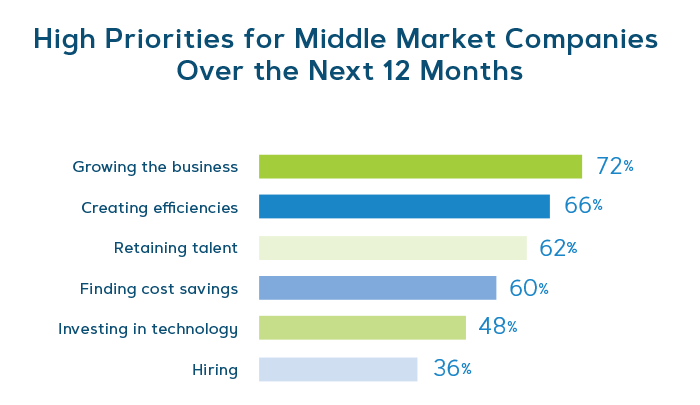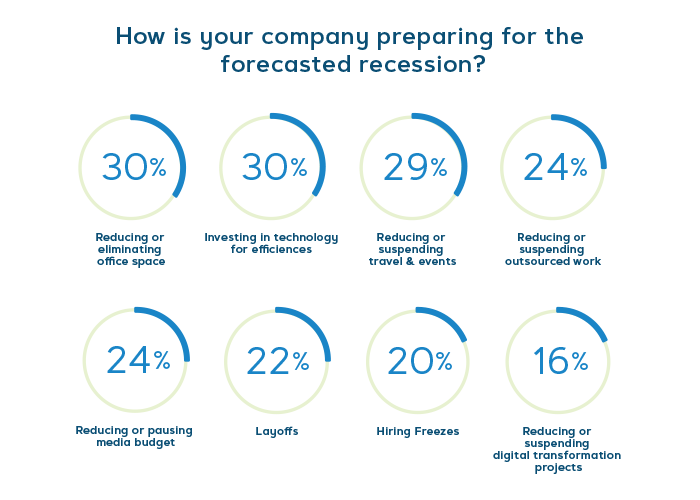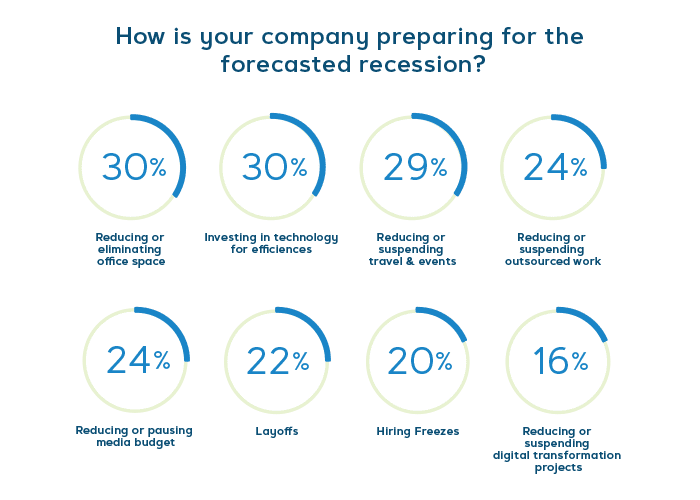Navigating economic uncertainty is challenging, especially as the construction industry is still adjusting to a new normal from previous downturns.
“The construction industry has fresh scars from the beating it took from The Great Recession and then the pandemic,” said Jim Campbell, Vice President & Business Line Executive, Construction for AvidXchange. “As if that wasn’t enough, construction firms are also battling supply chain shortages and delays, sky-rocketing costs, volatile pricing and an unrelenting labor shortage. And now they’re dealing with rising interest rates on top of it all.”
How is the industry preparing for what could be yet another challenge?
To understand how businesses are navigating these uncertain times, we surveyed 500 middle market professionals across all industries in August 2022. In this blog, we’ll unpack the survey results and dive deep into how the construction industry is preparing for a potential recession.
Can the past help construction firms prepare for future economic uncertainty?
The financial crisis of 2008 rocked the construction industry. According to ConstructConnect, nearly 150,000 firms went out of business between 2007 and 2013 and over 2.3 million construction jobs were lost due to layoffs, early retirement or workers leaving for other industries.
“I've never seen anything like it. The homebuilding industry shut off like a spicket. The money dried up and caused a chain reaction. Houses under construction couldn’t be finished or meet necessary appraised values, and work came to a standstill. While another recession is a real possibility, we’re not at the same level of crisis we experienced in 2008.”
Jim Campbell, Vice President & Business Line Executive, Construction, AvidXchange
Campbell explained many companies are expanding currently and infrastructure projects are on the rise thanks to recent legislation investments. There’s high demand for single-family homes, while demand is down in commercial office space construction mainly attributed to the shift to remote work.
Will rising inflation play a role in the construction industry?
Sixty-seven percent of our survey respondents said inflation is impacting the industries/customers they work with most. In construction, there’s concern that when prices and interest rates go up, construction costs will too. That means fewer people can qualify for a mortgage or pay the going price for a new home.
Campbell said owners are impacted the most by inflation and many are reluctant to make go-ahead decisions. Price fluctuation causes everybody to pause and forces contractors to re-examine their committed costs and transfer risk to the buyers. Contracts often are rewritten, and it forces construction firms to take less risk by passing the inflationary costs of materials to the consumer.
But, the availability of labor and critical building materials, like lumber and steel, trumps pricing in construction. Shortages are causing project delays and stopping construction firms from taking on new projects.
In a recent article in Engineering News Record, Stephen E. Sandherr, CEO of AGC of America and Anirban Basu, chief economist for Associated Builders and Contractors, agreed the battle for job candidates in construction is intense.
Construction firms aren’t alone in the struggle to secure necessary talent. Our survey of businesses across industries shows nearly two-thirds (62%) find retaining talent a high priority for their business over the next 12 months.

“When there aren’t enough workers to get the project done, it’s a real problem because it slows the payment stream from the top down and no one gets paid,” said Campbell.
How else are businesses coping with the challenges amidst the economic uncertainty created by a potentially looming recession?
They are searching for better ways of doing business.
Redefining construction business priorities in the face of economic uncertainty
Seventy percent of our survey respondents said their company is adjusting its budget over the next 12 months to prepare for a possible recession. They are examining it closely: 60% said they are looking for ways to reduce costs and 66% said they are looking to create efficiencies to increase productivity and improve profit margins.
For construction firms, it means finding ways to better manage overhead spending.
While many businesses look to layoffs to control costs, Richard Branch, chief economist at Dodge Data & Analytics, told Construction Dive that may prove to be a costly decision for construction firms because the current lack of available labor means it will likely be tough to rehire when the economy improves.
“Construction firms need to be extra cautious of overhead costs and ensure they aren’t adding more expenses,” said Campbell. “This means ensuring your staff has what it takes to do more with less.”
Construction firms turn to technology to keep costs in check, create efficiencies and enable growth
Nearly half (48%) of our survey respondents said investing in technology is a high priority for their business over the next 12 months. Forty percent said their company is increasing its budget for technology. Thirty percent said they’re preparing for the forecasted recession by investing in technology to create time and cost-saving efficiencies.


While the construction industry has never been an early adopter of technology, it’s increasingly turning to innovation to modernize and improve workflows — from using drones for better visibility to cloud-based accounts payable (AP) tools for better processes.
Automation, specifically, is top of mind for many. Thirty-six percent of survey respondents are focusing their technology investment on automation over the next 12 months. Thirty percent said they’re prioritizing automation to streamline internal processes like those in the back office.
Automated AP solutions that replace manual back-office processes, like invoice processing and bill pay, enable staff to handle those tasks from anywhere, at any time, including job sites. It also empowers staff to take on greater workloads without additional hiring.
“If a firm’s work doubles, the volume of invoices and payments double as well,” said Campbell. “To keep from hiring more people, they need productivity tools to allow their current staff to do more. Automation allows them to take on bigger workloads and removes the need for paper so it’s quicker to submit invoices and release funds to pay contractors and suppliers.”
What better way to keep contractors and suppliers happy — and earn their loyalty — than to ensure prompt, accurate payments?
Are you ready to help your construction business prepare for the future?
While no organization, construction firms included, can predict whether a recession is imminent, they can prepare for economic uncertainty by learning from others, understanding their priorities and investing in technology to modernize and protect their businesses.
For more information about how automation can fortify your construction firm download our white paper, “How Middle Market Finance Teams are Preparing for a Recession.”






